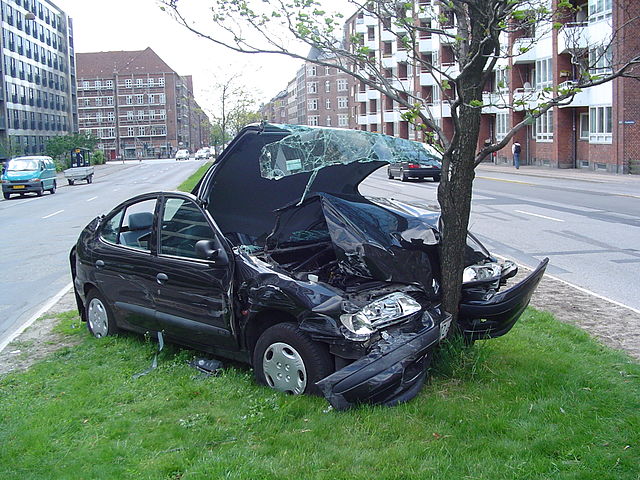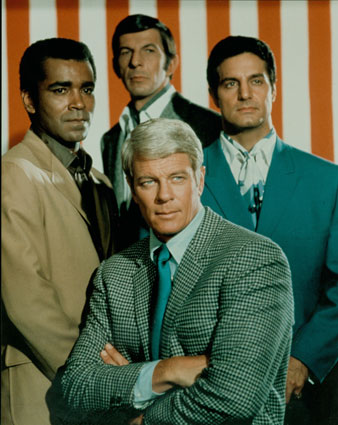Archive for the ‘Decisions’ Category
Choose Yourself
 We’ve been conditioned to ask for direction; to ask for a plan; and ask for permission. But those ways no longer apply. Today that old behavior puts you at the front of the peloton in the great race to the bottom.
We’ve been conditioned to ask for direction; to ask for a plan; and ask for permission. But those ways no longer apply. Today that old behavior puts you at the front of the peloton in the great race to the bottom.
The old ways are gone.
Today’s new ways: propose a direction (better yet, test one out on a small scale); create and present a radical plan of your own (or better, on the smallest of scales test the novel aspects and present your learning); and demonstrate you deserve permission by initiating activity on something that will obsolete the very thing responsible for your success.
People that wait for someone to give them direction are now a commodity, and with commodities it always ends in the death spiral of low cost providers putting each other out of business. As businesses are waist deep in proposals to double-down on what hasn’t worked and are choking on their flattened S-curves, there’s a huge opportunity for people that have the courage to try new things on their own. Today, if you initiate you’ll differentiate.
[This is where you say to yourself – I’ve already got too much on my plate, and I don’t have the time or budget to do more (and unsanctioned) work. And this is where I tell you your old job is already gone, and you might as well try something innovative. It’s time to grab the defibrillator and jolt your company out of its flatline. ]
It’s time to respect your gut and run a low cost, micro-experiment to test your laughable idea. (And because you’ll keep the cost low, no one will know when it doesn’t go as you thought. [They never do.]) It’s time for an underground meeting with your trusted band of dissidents to plan and run your pico-experiment that could turn your industry upside down. It’s time to channel your inner kindergartener and micro-test the impossible.
It’s time to choose yourself.
Incomplete Definition – A Way Of Life
 At the start of projects, no one knows what to do. Engineering complains the specification isn’t fully defined so they cannot start, and marketing returns fire with their complaint – they don’t yet fully understand the customer needs, can’t lock down the product requirements, and need more time. Marketing wants to keep things flexible and engineering wants to lock things down; and the result is a lot of thrashing and flailing and not nearly enough starting.
At the start of projects, no one knows what to do. Engineering complains the specification isn’t fully defined so they cannot start, and marketing returns fire with their complaint – they don’t yet fully understand the customer needs, can’t lock down the product requirements, and need more time. Marketing wants to keep things flexible and engineering wants to lock things down; and the result is a lot of thrashing and flailing and not nearly enough starting.
Both camps are right – the spec is only partially formed and customer needs are only partially understood – but the project must start anyway. But the situation isn’t as bad as it seems. At the start of a project fully wrung out specs and fully validated customer needs aren’t needed. What’s needed is definition of product attributes that set its character, definition of how those attributes will be measured, and definition of the competitive products. The actual values of the performance attributes aren’t needed, just their name, their relative magnitude expressed as percent improvement, and how they’ll be measured.
And to do this the project manager asks the engineering and marketing groups to work together to create simple bar charts for the most important product attributes and then schedules the meeting where the group jointly presents their single set of bar charts.
This little trick is more powerful than it seems. In order to choose competitive products, a high level characterization of the product must be roughed out; and once chosen they paint a picture of the landscape and set the context for the new product. And in order to choose the most important performance (or design) attributes, there must be convergence on why customers will buy it; and once chosen they set the context for the required design work.
Here’s an example. Audi wants to start developing a new car. The marketing-engineering team is tasked to identify the competitive products. If the competitive products are BMW 7 series, Mercedes S class, and the new monster Hyundai, the character of the new car and the character of the project are pretty clear. If the competitive products are Ford Focus, Fiat F500, and Mini Cooper, that’s a different project altogether. For both projects the team doesn’t know every specification, but it knows enough to start. And once the competitive products are defined, the key performance attributes can be selected rather easily.
But the last part is the hardest – to define how the performance characteristics will be measured, right down to the test protocols and test equipment. For the new Audi fuel economy will be measured using both the European and North American drive cycles and measured in liters per 100 kilometer and miles per gallon (using a pre-defined fuel with an 89 octane rating); interior noise will be measured in six defined locations using sound meter XYZ and expressed in decibels; and overall performance will be measured by the lap time around the Nuremburg Ring under full daylight, dry conditions, and 25 Centigrade ambient temperature, measured in minutes.
Bar charts are created with the names of the competitive vehicles (and the new Audi) below each bar and performance attribute (and units, e.g., miles per gallon) on the right. Side-by-side, it’s pretty clear how the new car must perform. Though the exact number is not know, there’s enough to get started.
At the start of a project the objective is to make sure you’re focusing on the most performance attributes and to create clarity on how the attributes (and therefore the product) will be measured. There’s nothing worse than spending engineering resources in the wrong area. And it’s doubly bad if your misplaced efforts actually create constraints that limit or reduce performance of the most important attributes. And that’s what’s to be avoided.
As the project progresses, marketing converges on a detailed understanding of customer needs, and engineering converges on a complete set of specifications. But at the start, everything is incomplete and no part of the project is completely nailed down.
The trick is to define the most important things as clearly as possible, and start.
How long will it take?
 How long will it take? The short answer – same as last time. How long do we want it to take? That’s a different question altogether.
How long will it take? The short answer – same as last time. How long do we want it to take? That’s a different question altogether.
If the last project took a year, so will the next one. Even if you want it to take six months, it will take a year. Unless, there’s a good reason it will be different. (And no, the simple fact you want it to take six months is not a good enough reason in itself.)
Some good reasons it will take longer than last time: more work, more newness, less reuse, more risk, and fewer resources. Some good reasons why it will go faster: less work, less newness, more reuse, less risk, more resources. Seems pretty tight and buttoned-up, but things aren’t that straight forward.
With resources, the core resources are usually under control. It’s the shared resources that are the problem. With resources under their control (core resources) project teams typically do a good job – assign dedicated resources and get out of the way. Shared resources are named that way because they support multiple projects, and this is the problem. Shared resources create coupling among projects, and when one project runs long, resource backlogs ripple through the other projects. And it gets worse. The projects backlogged by the initial ripple splash back and reflect ripples back at each other. Understand the shared resources, and you understand a fundamental dynamic of all your projects.
Plain and simple – work content governs project timelines. And going forward I propose we never again ask “How long will it take?” and instead ask “How is the work content different than last time?” To estimate how long it will take, set up a short face-to-face meeting with the person who did it last time, and ask them how long it will take. Write it down, because that’s the best estimate of how long it will take.
It may be the best estimate, but it may not be a good one. The problem is uncertainty around newness. Two important questions to calibrate uncertainty: 1) How big of a stretch are you asking for? and 2) How much do you know about how you’ll get there? The first question drives focus, but it’s not always a good predictor of uncertainty. Even seemingly small stretches can create huge problems. (A project that requires a 0.01% increase in the speed of light will be a long one.) What matters is if you can get there.
To start, use your best judgment to estimate the uncertainty, but as quickly as you can, put together a rude and crude experimental plan to reduce it. As fast as you can execute the experimental plan, and let the test results tell you if you can get there. If you can’t get there on the bench, you can’t get there, and you should work on a different project until you can.
The best way to understand how long a project will take is to understand the work content. And the most important work content to understand is the new work content. Choose several of your best people and ask them to run fast and focused experiments around the newness. Then, instead of asking them how long it will take, look at the test results and decide for yourself.
The Middle Term Enigma
 Short term is getting shorter, and long term is a thing of the past.
Short term is getting shorter, and long term is a thing of the past.
We want it now; no time for new; it’s instant gratification for us, but only if it doesn’t take too long.
A short time horizon drives minimization. Minimize waste; reduce labor hours; eliminate features and functions; drop the labor rate; cut headcount; skim off the top. Short term minimizes what is.
Short term works in the short term, but in the long term it’s asymptotic. Short term hits the wall when the effort to minimize overwhelms the benefit. And at this cusp, all that’s left is an emaciated shadow of what was. Then what? The natural extrapolation of minimization is scary – plain and simple, it’s a race to the bottom.
Where short term creates minimization, long term creates maximization. But, today, long term has mostly negative connotations – expensive, lots of resources, high risk, and low probability of success. At the personal level long term, is defined as a timeframe longer than we’re measured or longer than we’ll be in the role.
But, thankfully, there comes a time in our lives when it’s important for personal reasons to inject long term antibodies into the short term disease. But what to inject?
Before what, you must figure out why you want to swim against the current of minimization. If it’s money, don’t bother. Your why must have staying power, and money’s is too short. Some examples of whys that can endure: you want a personal challenge; you want to help society; your ego; you want to teach; or you want to help the universe hold off entropy for a while. But the best why is the work itself – where the work is inherently important to you.
With your why freshly tattooed on your shoulder, choose your what. It will be difficult to choose, but that’s the way it is with yet-to-be whats. (Here’s a rule: with whats that don’t yet exist, you don’t know they’re the right one until after you build them.) So just choose, and build.
Here are some words to describe worthwhile yet-to-be whats: barely believable, almost heretical, borderline silly, and on-the-edge, but not over it. These are the ones worth building.
Building (prototyping) can be expensive, but that’s not the type of building I’m talking about. Building is expensive when we try to get the most out of a prototype. Instead, to quickly and efficiently investigate, the mantra is: minimize the cost of the build. (The irony is not lost on me.) You’ll get less from the prototype, but not much. And most importantly, resource consumption will be ultra small – think under the radar. Take small, inexpensive bites; cover lots of ground; and build yourself toward the right what.
Working prototypes, even crude ones, are priceless because they make it real. And it’s the series of low cost, zig-zagging, leap-frogging prototypes that make up the valuable war chest needed to finance the long campaign against minimization.
Short term versus long term is a balancing act. Your prototype must pull well forward into the long term so, when the ether of minimization pulls back, it all slides back to the middle term, where it belongs.
Choose to Choose
 There will always be more work than time – no choice there. But, you can choose your mindset. You can choose to be overwhelmed; you can complain; and you can feel bad for yourself. You can also choose to invert it – you only work on vital projects because less important ones aren’t worth your time. Inverted, work is prioritized to make best use of your valuable time. When there’s too much work you can whine and complain, or you can value yourself – your choice
There will always be more work than time – no choice there. But, you can choose your mindset. You can choose to be overwhelmed; you can complain; and you can feel bad for yourself. You can also choose to invert it – you only work on vital projects because less important ones aren’t worth your time. Inverted, work is prioritized to make best use of your valuable time. When there’s too much work you can whine and complain, or you can value yourself – your choice
Most of us don’t choose what we work on, and sometimes it’s work we’ve done before. You can choose to look at as mind numbing tedium, or you can flip it. You can look at it as an opportunity to do your work a better way; to try a more effective approach; to invent something new. With repeat work you can dull it down or try to shine – your choice.
Sometimes we’re asked to do new and challenging work. You can choose to be afraid; you can make excuses; and you can call in sick for the next month. Or you can twist it to your advantage and see it as an opportunity to stretch. With challenging work you can stunt yourself or grow – your choice.
Negativity repels and positivity attracts – it’s time for you to choose.
Creativity’s Mission Impossible
 Whether it’s a top-down initiative or a bottom-up revolution, your choice will make or break it.
Whether it’s a top-down initiative or a bottom-up revolution, your choice will make or break it.
When you have the inspiration for a bottom-up revolution, you must be brave enough to engage your curiosity without self-dismissing. You’ll feel the automatic urge to self-reject – that will never work, too crazy, too silly, too loony – but you must resist. (Automatic self-rejection is the embodiment of your fear of failure.) At all costs you must preserve the possibility you’ll try the loony idea; you must preserve the opportunity to learn from failure; you must suspend judgment.
Now it’s time to tell someone your new thinking. Summon the next level of courage, and choose wisely. Choose someone knowledgeable and who will be comfortable when you slather them with the ambiguity. (No ambiguity, no new thinking.) But most importantly, choose someone who will suspend judgment.
You now have critical mass – you, your partner in crime, and your bias for action. Together you must prevent the new thinking from dying on the vine. Tell no one else, and try it. Try it at a small scale, try it in your garage. Fail-learn-fail until you have something with legs. Don’t ask. Suspend judgment, and do.
And what of top down initiatives? They start with bottom-up new thinking, so the message is the same: suspend judgment, engage your bias for action, and try it. This is the precursor to the thousand independent choices that self-coordinate into a top-down initiative.
New thinking is a choice, and turning it into action is another. But this is your mission, if you choose to accept it.
I will be holding a half-day Workshop on Systematic DFMA Deployment on June 13 in RI. (See bottom of linked page.) I look forward to meeting you in person.
Of Sound Mind and Body
 As professionals we get paid to think. But unlike professional athletes, we’ve forgotten the importance of mind and body.
As professionals we get paid to think. But unlike professional athletes, we’ve forgotten the importance of mind and body.
Clearly, mind is connected to body. (I’m not talking about a metaphysical connection, I’m talking about a physical physical connection.) There are electromechanical connections (nerves) that pass information between the two and hydromechanical connections (blood vessels) that pass chemistry (oxygen and glucose, among others). The coupling is clear – what happens in one influences the other, then the other retorts. This back-and-forth ringing is complex and real. From the outside, our system architecture is highly coupled, yet from the inside we forget.
Professional athletes want high performance, and they get it through hard work, good food, regimented eating schedules, and rest. From the outside it seems they’re all about body, but on the inside they’re all whole system optimization – mind and body. (Yogi Berra – baseball is 90% mental and the other half physical.) They know food and rest influence the body, but they also know it influences the mind. They remember, we forget.
As a professional thinker, I urge you to do all you can to think well. Eat well, eat regularly, and get rest. The cost of a bad decision is high, and they’re more likely when blood sugar is low and you’re tired. If you don’t do it for your career, do it for your company – remember, they’re paying you to think.
(Image credit: iStockphoto)
Why It’s Tough To Decide
 There is no progress without decisions. More strongly, decisions are unsung heroes of progress.
There is no progress without decisions. More strongly, decisions are unsung heroes of progress.
Decisions are powerful – things are different after a decision. (You are different after a decision.) Before a decision it’s one way, and after, another. And once a decision is made, the follow-on actions are clear, straightforward, transactional. In fact, the follow-on plan is justification for the decision. Decide this, do that. Decide the other, do something else. But decision is the hard part.
Progress is born from decisions and follow-on actions, but actions get attention and Gantt charts and decisions get short-suited. There is no project plan for deciding, no standard work. And it’s often unclear when a decision is made. Rarely is a decision documented. And once the organization recognizes a decision has evolved to stand on its own, the rationale and ramifications are unclear. And it’s unclear who birthed the decision. (The genetics of the parents define the status of the decision.)
There are two types of decisions: made decisions and unmade decisions. Made decisions are the ones we know, but it’s the slippery unmade decisions that are the troublemakers, the devious gremlins. Unmade decisions have a life force – they want to live, to remain undecided. (When unmade decisions are decided, they die.) That’s why it’s so hard to decide.
Over the millennia unmade decisions have developed natural defenses. Their best trick is camouflage. They know if they’re recognized, there’s a good chance they’ll be decided, and it’s over. When they go to the meetings they hide in plain sight. They blend in with the wood grain of conference table or the texture of the ceiling tiles. They’re there, but hiding.
Unmade decisions know when they’re about to be decided – much like migratory birds sense gravitational fields. When they’re almost snared, they create complexity and divide into many, small, unmade decisions (think cellular division) and scatter. The increased complexity requires more decisions and enables at least some of themselves to live to fight another day.
But there’s hope. Unmade decisions get their life force from us – we decide how long they live; we choose not to see them; we choose to create complexity.
We must learn to spot unmade decisions, to call them out, and help our teams decide. At your next meeting, ask yourself if there’s an unmade decision hiding in plain sight. If there is, call it out, and decide if it should be decided.
 Mike Shipulski
Mike Shipulski